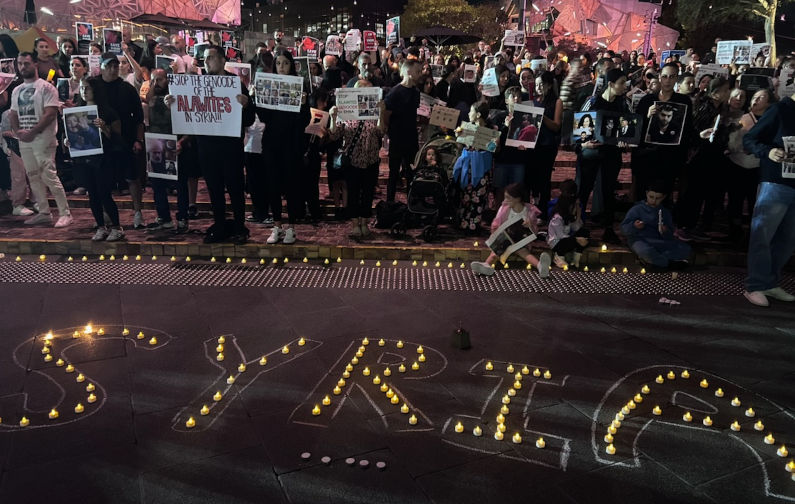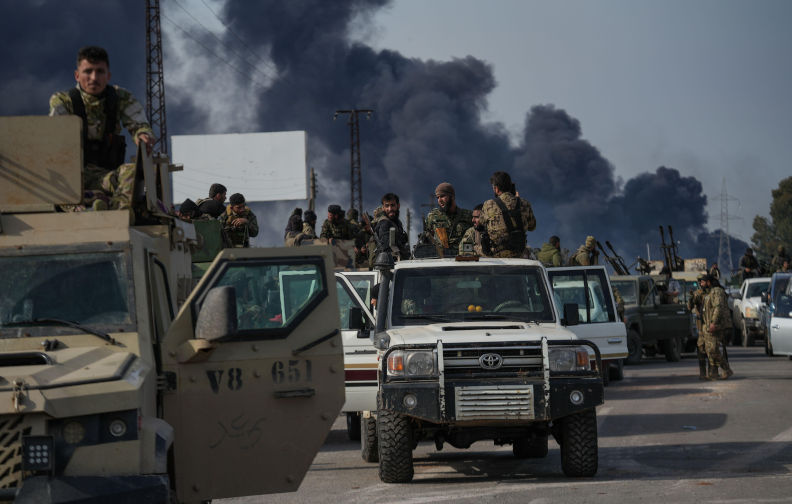The terrorists set loose on Syria more than a decade ago were slaughtering Alawis, and now they are systematically slaughtering them again – in their thousands.
“Christians to Beirut, Alawis to the grave.” That was the cry when they were members of armed groups, but now they are pursuing their goal as “state security forces” representing the “interim government” in Damascus.
It was obvious in 2011 and 2012 — or should have been — that if these people ever came to power, the gruesome murders we are now seeing on social media video clips is exactly what would happen.
The mainstream media is downplaying what is going on because it was complicit in the rise to power of these “rebels” from the beginning. Whatever they gave the media as fact was good enough to be published. The media was hungry for anything that blackened the name of the government in Damascus. Outright lies, distortions, exaggerations – all served the cause. That the Syrian Government was secular and many of the proxy forces tearing the country apart were proscribed as terrorists didn’t matter as long as the “Assad regime” was destroyed.
Many in these groups were not “rebels” because they were not even Syrian. They were Chechens from the Caucasus, Uyghurs from western China, Tajiks from central Asia as well as others from the four corners of the Muslim world. They poured into Syria from across the Turkish border, perhaps to join the Islamic State, al-Qaeda in Iraq or its regional representative in Syria, Jabhat al Nusra, whose head, Abu Muhammad al Jolani, now rules in Damascus under the name of Ahmad al Shara’a.
There were many other groups tasked with bringing down the secular government in Damascus, not to return full democracy to the people, needless to say, but in the eyes of their Western and regional sponsors, to destroy the central arch in the Iran-Syria-Hezbollah strategic alliance.
These groups fought among themselves until united forcefully under the banner of Haya’t Tahrir al Sham — Jabhat al Nusra rebranded — but all were ideological clones of al-Qaeda or the Islamic State.
There was no hiding what they wanted. They were not just engaged in jihad, whose main meaning is not “holy war” but the effort to live the good life according to the tenets of Islam. These people were takfiris, a word that comes from takfir wa al-hijra (declaration of unbelief and flight), a phrase derived from the early days of Islam when Muslims fled to Medina to get away from persecution in Mecca.
In modern times, the phrase was closely associated with the writings of Sayyid Qutb, the revolutionary ideologist of the Muslim Brotherhood. As interpreted by him, the most dangerous enemy comes from the inside, not the outside, from Muslim Governments that do not truly represent Islam but betray it. The takfiris metaphorically take flight from the corruption of these “false” Muslims and take up arms to destroy them.
Egypt was a main target in the 1980s-90s. President Anwar Sadat was assassinated in 1981 by a member of Islamic Jihad which, in the 1990s, together with Jama’a al Islamiyya, killed hundreds of Egyptian soldiers, civilians and tourists, in a bid to destroy one of the foundations of the Egyptian economy.
In Syria, the takfiris were supported by the US, by European Governments and their regional allies, including Turkey, Saudi Arabia and Qatar, which waged a propaganda war against the Syrian Government through Al Jazeera. Qatar alone is estimated to have spent up to $3 billion just in 2011-2012 to destroy the Syrian Government even if it brought the takfiris into Damascus. Australia was involved in this campaign, not just politically, but militarily, when its warplanes joined a US-led attack on a Syrian army base.
From the moment the takfiris arrived in Damascus, the message passed on through the media was that the leopard had changed its spots. They were “reformed” terrorists but recent events have shown that the spots are still there and they are filthy ones. From the languages being heard in Latakia, the killers include Chechens, Tajiks, Jordanians and, apparently even a few Americans.
Their victims since 2011 include terrorised and murdered Christians, whose number in Syria has dropped from an estimated two million in 2010 to 250,000-300,000 now. In the land where Christianity was born, they are being driven out.
The particular focus of takfiri hatred, however, are the Shia, of which the Alawis (Alevi in Turkey) are a heterodox subgroup. Another Shia sub-group, the Ismailis, is similarly threatened, but the gangs have also been killing Sunni Muslims who dare stand against them, including venerable shaikhs, as they have been doing since 2011.
Jolani/Shara’a has set up a commission to investigate the crimes when he himself needs to be investigated. Most of the killers were members of his own alliance; he knew they were in Latakia, and it is scarcely conceivable that he didn’t know what they were doing.
What is needed is an independent inquiry, not one carried out under the aegis of a man involved in the past with genocidal groups committing numerous atrocities against civilians and currently heading an “interim government” to which many of the Latakia massacrists were formally attached.

The butchery was not the work of isolated groups but of large numbers of men caught up in a widespread sectarian frenzy that led to the slaughter of women and children as well as men. The killers wiped out entire villages and took pleasure in the hideous crimes they were committing.
It is extraordinary and deeply sickening that at this precise juncture the EU could simultaneously express “grave concern” at the “coastal violence” in Syria, as if it was no more than an unexpected storm, could call for those responsible to be held accountable and could then formally invite “Ahmad al Shara [sic]” to a “donors’ conference” in Brussels on 17 March. He will not be giving money but will go expecting it, and there’s no doubt it will be given.
This slaughter is the entirely foreseeable result of the intervention in Syria that began in 2011. The US, European Governments and regional Middle Eastern Governments financed, trained and armed these people. They didn’t care what they did as long as the government in Damascus was overthrown. No crime was so great that it could not be hidden, denied, covered up or blamed on “the regime”.
The media played the same game and is doing it again right now by presenting the Latakia massacres as “revenge killings” or the fault of “Assad loyalists”.
In fact, the resistance is coming from Syrian loyalists, not “Assad loyalists”, engaged in defending their country from the attempt by these fanatics to wipe out everything that modern, secular multi-confessional Syria represents.
One final point. No Muslim who massacres civilians, especially women and children, such as we have seen happening in Latakia and elsewhere since the Assad Government collapsed last December, or those who authorised their killing, can possibly be called a true Muslim, but is a murtadd, a rebel, an apostate, a renegade, someone who abandons the principles of their faith. Islam completely proscribes such behaviour.
The views expressed are solely those of the author and may or may not reflect those of Pearls and Irritations.

Jeremy Salt
Jeremy Salt taught modern Middle East history at the University of Melbourne, Bogazici (Bosporus) university in Istanbul and Bilkent University in Ankara. he is the author of ‘The Unmaking of the Middle East. A history of Western Disorder in Arab Lands (University of California Press, 2008) and ‘The Last Ottoman Wars. The Human Cost 1877-1923’ (University of Utah Press, 2019). He is now an independent researcher.
